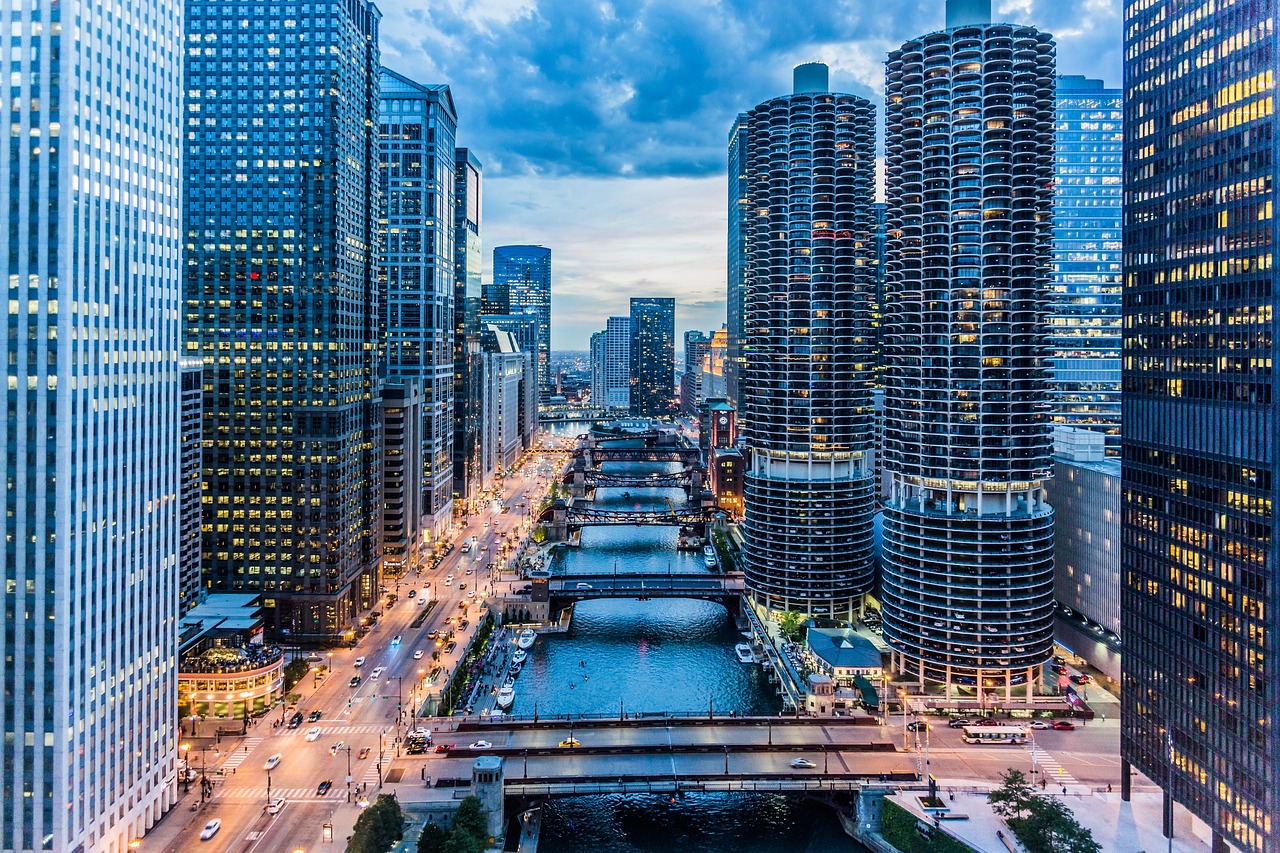From Empty Offices to Affordable Homes: Chicago Office Property for the Remote Era

Chicago office property is in trouble. The vibrant heart of Chicago’s economy, its once-bustling downtown, has undergone a significant transformation due to rising interest rates, pandemic effects, and the swift, nationwide decline of office real estate.
A boom in remote work and the closing of communal workspaces have left cities like Chicago grappling with the aftermath, regardless of corporate efforts to revert to office life. Chicago office property is being hit hard, following a nationwide trend, with some analysts predicting a 35% drop in values by the end of 2025, and a prospective office bounceback not on the horizon til the early 2040s.
Key Takeaways
- The remote work trend continues to rise in 2023, leading to record-breaking office vacancies in downtown Chicago.
- Despite some local skepticism, Chicago is innovatively responding by repurposing these vacant spaces into affordable housing.
- The LaSalle Reimagined Initiative stands as a prime example of transformative strategies being implemented by urban planners to address this growing issue.
Table of Contents
The usual hustle and bustle of the downtown district – once teeming with diners, shoppers, and office workers – has dwindled significantly. In the first quarter of 2023, a startling 22.4% vacancy rate was recorded in Chicago’s downtown office spaces.
This leaves the city at a crossroads: How should city leaders, investors, and other stakeholders work to repurpose all this unused commercial property?
Chicago’s authorities are tackling this conundrum with forward-thinking strategies, transforming vacant office spaces into affordable homes, and bringing a wave of new investments and housing opportunities.
Why Capital Economics Thinks Office Values Set to Drop 35% by Late 2025
The LaSalle Reimagined Initiative: Chicago Office Property and Housing Reimagined
The initiative encompasses three chosen projects aimed at converting part of LaSalle Street’s empty 5 million square feet into mixed-income residences. Each project seeks funding support from the city to breathe life into the plans. The proposed housing units are designed for inhabitants earning around 60% of the median income of the area.
Marisa Novara, who heads Chicago’s Department of Housing, recently revealed that nearly 600 affordable housing units could be built through the LaSalle Reimagined Initiative. She expressed the importance of public investment for these developments, highlighting that it would pave the way for more affordable living options in the Loop.
See how San Francisco’s commercial property sector is dealing with rising defaults.
Facing the Housing Conundrum
However, some Chicagoans express doubts. A longtime West Loop resident expressed concerns about the viability of these locations for long-term residential use. They argued that the proposed lower rents may not serve those most in need of housing, and the location is not ideal due to the absence of green spaces, convenient supermarkets, and sufficient parking.
The resident also questioned the plan’s appeal to higher-income tenants, stating that better options are available nearby for those willing to pay market rates. They pointed to areas such as the West Loop, South Loop, River North, and River East as prime locations offering more value for money.
Addressing Vacancy Rates
Regardless of the success or failure of the LaSalle Reimagined Initiative, many recognize that addressing the high vacancy rate requires more than just converting empty offices into homes.
Amy Masters, who represents the Building Owners and Managers Association of Chicago, acknowledged the financial strain on downtown office buildings due to soaring vacancy rates. She applauded initiatives like the LaSalle Reimagined Initiative as crucial steps toward reviving the city’s heart. However, she added that more needs to be done, such as supporting the Small Business Improvement Fund’s efforts to revitalize downtown businesses.
Is the rate hike pause a respite for commercial real estate?
The Future of Office Spaces
There is lingering uncertainty about whether office occupancy rates will bounce back to pre-pandemic figures. The evolution of the new economy in cities like Chicago is yet to be determined, including the future of Chicago office property.
Despite this, Masters remains hopeful about the future of office spaces. She shared how adaptations have been made throughout the pandemic, leading to new norms and comforts in the workplace. She insisted that offices will endure as hubs for collaboration, innovation, and community, though their formats may continue to evolve.
Masters also stressed that regardless of the success of conversion projects, the presence of office workers is integral to rejuvenating the downtown economy, thus impacting every neighborhood in Chicago.
Commercial Real Estate’s Path Forward
Until a decrease in Chicago office property commercial real-estate vacancy rates is observed, projects like the LaSalle Reimagined Initiative will continue to emerge, offering innovative solutions to the problem.
Novara noted the likely permanence of hybrid work systems and underscored the need for the innovative repurposing of buildings. She pledged that the Department of Housing would persist in promoting the equitable distribution of affordable housing throughout Chicago.



